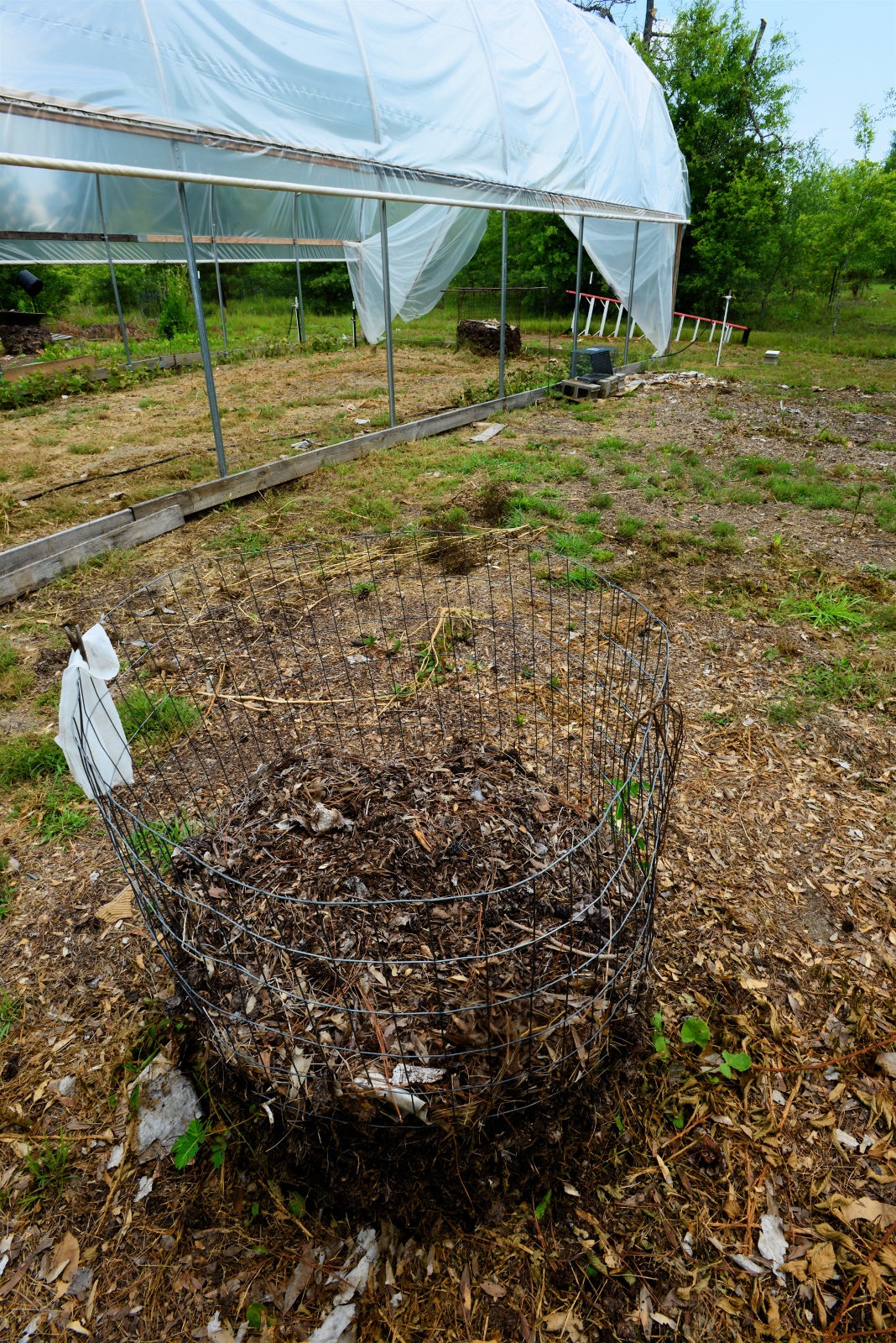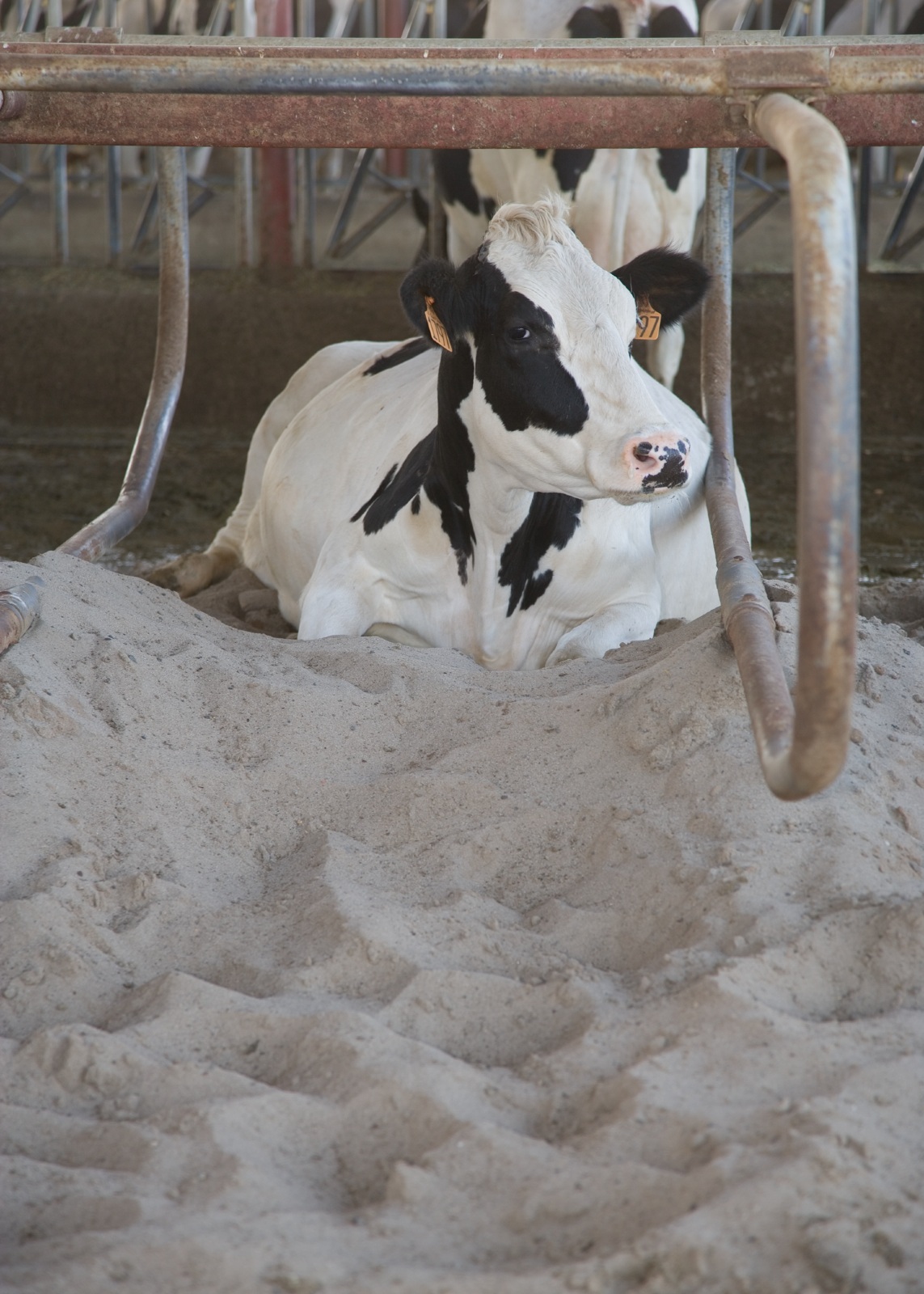-
Download:
My Results |
All BMPs
Agricultural Waste Composting
 A compost heap handles vegetable and other plant waste on an organic farm (Saucier, Miss.). Photographer: Stephen Kirkpatrick. Photo Courtesy of USDA NRCS.
A compost heap handles vegetable and other plant waste on an organic farm (Saucier, Miss.). Photographer: Stephen Kirkpatrick. Photo Courtesy of USDA NRCS.
Practice Type: Management
Landuse/Agriculture Type: Row Crop, Fodder, Rice
Climatic Zones: Temperate, Semiarid, Tropical
Regions: North America, South Asia, Europe
Pollutants Treated: Nitrogen, Phosphorus, Sediment
Description: Agricultural waste products (unused portions of crops or waste products from processing) including have the potential to contribute nutrients and should be managed in a manner that prevents nutrient contamination to surface and ground waters. Consideration should be given to the amount of raw waste generated, the nutrient content of the waste product, and recognition that nutrient loading depends on the way in which the waste is handled after harvest. Most vegetable waste, such as sweet corn fodder, cull ears and husks can be used as a green manure by applying it to production fields. 1
Scalable to small farms? Yes
1 Selman, Mindy, and Suzie Greenhalgh. "Eutrophication: Policies, Actions, And Strategies to Address Nutrient Pollution." WRI Policy Note, Water Quality: Eutrophication And Hypoxia. Sept. 2009. Web. Feb. 2014. http://pdf.wri.org/eutrophication_policies_actions_and_strategies.pdf.
Alternative Tile Intakes: Perforated Risers
 Installing perforated drainage tubing into a wet area in north-central Iowa in the 1980's. Photographer: Lynn Betts. Photo Courtsey of USDA NRCS.
Installing perforated drainage tubing into a wet area in north-central Iowa in the 1980's. Photographer: Lynn Betts. Photo Courtsey of USDA NRCS.
Practice Type: Structural
Landuse/Agriculture Type: Row Crop
Climatic Zones: Temperate
Regions: North America, Europe
Pollutants Treated: Phosphorus, Sediment
S Efficiency1: 90-95%
Description: Perforated risers are a type of alternative tile intake that increases sediment trapping efficiency through increased settling time and/or filtering. They can also reduce the velocity of flow into the tile inlet. Isolated surface depressions in agricultural fields are commonly drained with subsurface tile having surface intakes. Open intakes that are flush with the surface of the ground can provide a direct conduit for sediment and nutrients to enter the tile system, which lead to ditches, streams, and rivers. 2
Implementation Considerations: Perforated risers create field obstacles that must be avoided during tillage, plant and harvest operations.
Scalable to small farms? No
1 Miller, T. P. , J. R. Peterson, C. F. Lenhart, and Y. Nomura. 2012. The Agricultural BMP Handbook for Minnesota. Minnesota Department of Agriculture.
2 Miller, T. P. , J. R. Peterson, C. F. Lenhart, and Y. Nomura. 2012. The Agricultural BMP Handbook for Minnesota. Minnesota Department of Agriculture.
Animal Waste Management Systems
 Animal Waste Management Systems. Source: Animal Waste Management Systems - Livestock, Maryland Department of Agriculture (MDA).
Animal Waste Management Systems. Source: Animal Waste Management Systems - Livestock, Maryland Department of Agriculture (MDA).
Practice Type: Structural, Management
Landuse/Agriculture Type: Animal Confinement
Climatic Zones: Temperate, Semiarid, Tropical
Regions: North America, South Asia, Europe
Pollutants Treated: Nitrogen, Phosphorus, Sediment
N Efficiency1: 75%
P Efficiency1: 75%
S Efficiency1: N/A
Description: Animal waste management systems properly handle, store, and ensure proper utilization of wastes generated from confined animal operations. They collect waste from production areas and store it in appropriate structures such as tanks, lagoons, sheds, and pits. Properly collecting and storing the manure allows the producer to determine the appropriate time for land application, preventing nutrient runoff and leaching.2
Implementation Considerations: To minimize the effects of storage facilities on nearby water bodies, animal waste management systems should not be located in flood plains.
Scalable to small farms? Yes
1 "Documentation: Source Data, BMP Effectiveness Values." Chesapeake Assessment Scenario Tool. Web. 2013. http://casttool.org/Documentation.aspx .
2 Estimates of County-level Nitrogen and Phosphorus Data for Use in Modeling Pollutant Reduction Documentation for Scenario Builder Version 2.2." Chesapeake Bay. Dec. 2010. Web. May 2013. http://archive.chesapeakebay.net/pubs/SB_V22_Final_12_31_2010.pdf.
Barnyard Runoff Control
Category: Erosion Control, Manure Management
Practice Type: Structural
Landuse/Agriculture Type: Animal Confinement
Climatic Zones: Temperate, Semiarid, Tropical
Regions: North America, Europe
Pollutants Treated: Nitrogen, Phosphorus, Sediment
N Efficiency1: 20%
P Efficiency1: 20%
S Efficiency1: 40%
Description: Barnyard or feedlot runoff controls collect, treat, and reduce runoff from barnyards. The controls make up a system of components like erosion-resistant channels, subsurface drains with rock filled trenches along building foundations below eaves, underground outlets, roof gutters, surface water diversions, and downspouts. Managing runoff from barnyard areas can help to avoid excessive runoff of manure and sediment from loafing lots and manure piles in and around the animal confinement area. 2
Implementation Considerations: Dairy farms may need specialized treatment of milkhouse wastewater in addition to standard feedlot runoff controls.
Scalable to small farms? Yes
1 "Documentation: Source Data, BMP Effectiveness Values." Chesapeake Assessment Scenario Tool. Web. 2013. http://casttool.org/Documentation.aspx .
2 Estimates of County-level Nitrogen and Phosphorus Data for Use in Modeling Pollutant Reduction Documentation for Scenario Builder Version 2.2." Chesapeake Bay. Dec. 2010. Web. May 2013. http://archive.chesapeakebay.net/pubs/SB_V22_Final_12_31_2010.pdf.
Practice Type: Structural
Landuse/Agriculture Type: Animal Confinement
Climatic Zones: Temperate, Semiarid, Tropical
Regions: North America, Europe
Pollutants Treated: Nitrogen, Phosphorus, Sediment
N Efficiency1: 20%
P Efficiency1: 20%
S Efficiency1: 40%
Description: Barnyard or feedlot runoff controls collect, treat, and reduce runoff from barnyards. The controls make up a system of components like erosion-resistant channels, subsurface drains with rock filled trenches along building foundations below eaves, underground outlets, roof gutters, surface water diversions, and downspouts. Managing runoff from barnyard areas can help to avoid excessive runoff of manure and sediment from loafing lots and manure piles in and around the animal confinement area. 2
Implementation Considerations: Dairy farms may need specialized treatment of milkhouse wastewater in addition to standard feedlot runoff controls.
Scalable to small farms? Yes
1 "Documentation: Source Data, BMP Effectiveness Values." Chesapeake Assessment Scenario Tool. Web. 2013. http://casttool.org/Documentation.aspx .
2 Estimates of County-level Nitrogen and Phosphorus Data for Use in Modeling Pollutant Reduction Documentation for Scenario Builder Version 2.2." Chesapeake Bay. Dec. 2010. Web. May 2013. http://archive.chesapeakebay.net/pubs/SB_V22_Final_12_31_2010.pdf.
Bedding Area Management
Category: Manure Management
Practice Type: Management
Landuse/Agriculture Type: Animal Confinement
Climatic Zones: Temperate, Semiarid, Tropical
Regions: North America, South Asia, Europe
Pollutants Treated: Nitrogen, Phosphorus, Sediment
Description: Effective bedding options help to minimize the buildup of bedding and manure, as manure builds up around bedding areas. Bedding materials like straw and sawdust have varying water absorption capabilities, with oat straw being most absorptive. Bedding areas should be located away from bodies of water and riparian areas.1
Implementation Considerations: To better manage the bedding area, portable windbreaks should be used to catalyze the frequent movement of cattle and their bedding areas to minimize manure buildup in any one area. If bedding sites area near riparian areas, fencing should be used to keep cattle out of streams.
Scalable to small farms? Yes
1 "Beneficial Management Practices: Environmental Manual for Alberta Cow/Calf Producers." Alberta Agriculture and Rural Development. 2004. Web. Apr. 2014. http://www1.agric.gov.ab.ca/$department/deptdocs.nsf/all/epw8724/$FILE/FINAL_BMP_June_17.pdfhttp://www1.agric.gov.ab.ca/$department/deptdocs.nsf/all/epw8724/$FILE/FINAL_BMP_June_17.pdf .
Practice Type: Management
Landuse/Agriculture Type: Animal Confinement
Climatic Zones: Temperate, Semiarid, Tropical
Regions: North America, South Asia, Europe
Pollutants Treated: Nitrogen, Phosphorus, Sediment
Description: Effective bedding options help to minimize the buildup of bedding and manure, as manure builds up around bedding areas. Bedding materials like straw and sawdust have varying water absorption capabilities, with oat straw being most absorptive. Bedding areas should be located away from bodies of water and riparian areas.1
Implementation Considerations: To better manage the bedding area, portable windbreaks should be used to catalyze the frequent movement of cattle and their bedding areas to minimize manure buildup in any one area. If bedding sites area near riparian areas, fencing should be used to keep cattle out of streams.
Scalable to small farms? Yes
1 "Beneficial Management Practices: Environmental Manual for Alberta Cow/Calf Producers." Alberta Agriculture and Rural Development. 2004. Web. Apr. 2014. http://www1.agric.gov.ab.ca/$department/deptdocs.nsf/all/epw8724/$FILE/FINAL_BMP_June_17.pdfhttp://www1.agric.gov.ab.ca/$department/deptdocs.nsf/all/epw8724/$FILE/FINAL_BMP_June_17.pdf .

